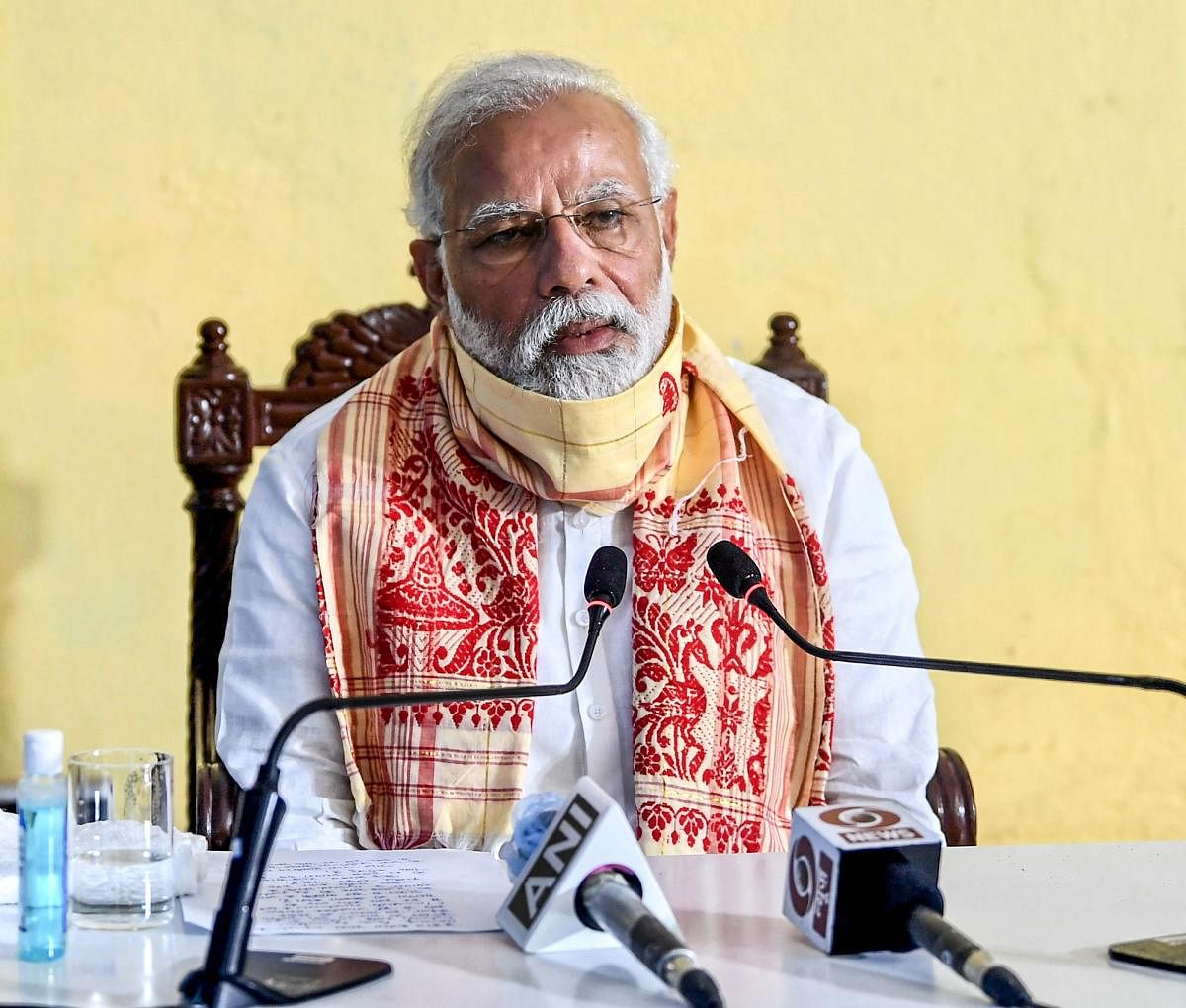
In the spate of interviews she gave to newspapers and television news channels after her five press conferences announcing the Rs 20 lakh crore package for the COVID-19-hit economy, Finance Minister Nirmala Sitharaman had revealed, in bits and pieces, the thinking, or the economic philosophy if you will, of the Modi government. The key phrase she used to characterise the package was that it is about empowerment and not entitlement. And she used a homely proverb, saying that if you give fish to someone it will last only a day, but if you teach someone to fish, then you would have made a person self-reliant. This was a round-about way of saying that the government does not intend to put money in the accounts of poor people as suggested by economist and Nobel laureate Abhijit Banerjee in his interaction with former Congress president Rahul Gandhi.
The Finance Minister said that all ideas were taken on board, but the government chose the ideas that it believed in. She refused to be drawn into a debate about the merits and demerits of the ideas chosen and those rejected. She also let it out in one of her interviews that this government has learnt from what was done between 2008 and 2013, which is an indirect reference to the UPA-2 government and to the stimulus package that then finance minister Pranab Mukherjee had rolled out in response to the 2008 financial meltdown and recession, and critics felt that it was this package that pushed the Indian economy to the edge. She made it clear that the Modi government did not want to go down that path.
Many economists are of the view that the COVID-19-triggered economic crisis needs a liberal fiscal stimulus and that Sitharaman’s package has failed in that because she has only facilitated credit lines, which is an indirect way of nudging private enterprises to get the economy started after the 50-day nationwide lockdown. She has not loosened the government’s purse-strings in any way though she has increased the outlay for the MNREGS.
Sitharaman is standing her ground and saying that she is not inclined to indulge in a spending spree that could revive the economy. A generous interpretation of the FM’s stance -- and it need not be overemphasised that this is the thinking of Prime Minister Narendra Modi and that the finance minister is only restating her leader’s position -- is that she is erring on the side of fiscal prudence. The only argument in her favour would be that we may only be at the beginning of the end of the COVID-19 crisis, and that there is a long road ahead to economic recovery and that she would not want to throw open the resources all at once and all at one go. She is giving herself the room and time for future crisis intervention. She has herself said that one does not know how long the pandemic will last and that there is uncertainty ahead.
The other interpretation is that this is a right-wing government and that it believes in the right-wing economic principle of letting people fend for themselves and that the government should play a minimal role.
This is a position that exposes itself to the onslaught of liberal economic sentiment and socialist principles, where the government would be shown as callous and heartless in the face of the economic misery of millions of poor people. But Modi is likely to counter this righteous indignation of his critics by pointing to the free ration he was giving out to ration-card holders for the last three months, which could be extended for a few more months, and the free cylinders he had provided to rural households for three months, apart from the dole through cash transfers to the old, to the disabled and to construction workers.
The finance minister would readily admit that this is inadequate, but she would not think of increasing the amount of cash transfers or even extending it to more people among the poor. She is hopeful that the crunch time would not last long and that the economy would struggle to its feet again. Modi and Sitharaman are fully aware that they are going against the current of received economic wisdom that governments must spend to pull the economy out of a recession.
But this common-sensical economic conservatism can turn out to be an unimaginative, rigid, and even stupid, stance when faced with an extraordinary situation that requires an unorthodox response. Modi runs the risk of a sub-optimal economic growth rate in the next two to three years if it refuses to increase public expenditure and investment as it had done in the last five years, and hopes to stimulate private expenditure and investment, instead. Between 2014 and 2019, it was public expenditure and private consumption that held up the falling growth rate, even as private capital formation and private investment remained mulish and muted.
The government faces an economic policy challenge that goes beyond the COVID-19 pandemic and the resultant economic disruption. There is a deeper problem of the mindset. The Modi government wants to control the economy even as it dismantles public sector enterprises. Meanwhile, private sector entrepreneurs are wary of the State hovering over their business ventures. Modi’s dream of creating an overweening State which will control the lives of individuals as well as of entrepreneurs is turning out to be a hurdle that is impeding growth. It is unlikely that Modi will revise his right-wing political thinking. The people will have to decide whether they will put up with politics where they are not important, and an abstraction called the nation-state is made a fetish of. Where lives are withering and livelihoods are crumbling, the rhetoric of national pride turns into a cruel joke.